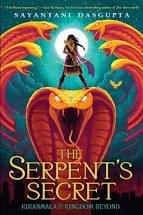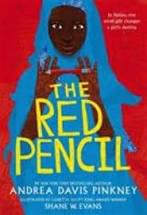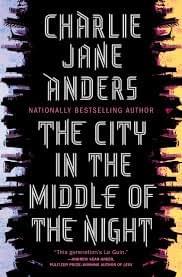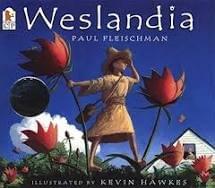Over the summer, author and professor Tracey Baptiste gave a digital workshop, “The World Isn’t Flat! World Building for Realistic and Fantasy Stories,” for SCBWI members. She's the awesome author of the Jumbies series (look for my review of the first Jumbie book in December, as a Holiday Pick and series starter).

She talked about five big things she felt were most important for authors to keep in mind when building a world, whether it be a high fantasy or contemporary world. While some of them seemed obvious, she said they each have to be considered when you go into drafting because they work in close concert with each other.
1. TIME. She pointed out that even before a story starts, you as the author need to know how your character's and world's time will be told. "You have to know how time works concurrently before the story starts," she said.
She pointed out that most authors are not making up new units of time, or even different ways the time works in the story. Rather, they're working within well-known frameworks, but they have to make those frameworks known to their readers up front.
This resonated with me, because in my latest WIP, I started by making a schedule of my MC 6th grader's classes and her extracurricular (soccer) activities. That's how she marks her "time." It was vital to know where she'd be, class period to class period, and with whom -- best friend in which classes, running by which bully in the hallway between classes, eating with which friends at lunch, for example -- before I started writing. And I consulted that schedule over and over as I wrote. It was an anchor.
Baptiste suggested using mentor texts to get a feel for how to do this, and there are many different techniques to study and use to tell your story.
Flashbacks. One example of using flashbacks in text (which I've not yet done) was The Serpent's Secret, by Sayantani Dasgupta, which opens with "The ... craptastic day," and the MC's 12th birthday. The main character is clearly traveling through time and space, and it lays out the time framework in the first paragraph, so when the author flashes back, "Let me back up…" to the "start" of the story, the reader can easily follow and come along for the ride.

Summarization. I've tried to use this specific writing technique before, in a very early version of my second WIP, and it didn't go well. It's a technique I've seen done, simply put, where the author summarizes the story in the beginning. It's a few lines, no more, and then it goes back to the "beginning" of the story. Like a narrator, speaking after the story's done, introducing it.
It's not a flashback, per se, and it's a different technique than starting en media res, which I do love and one day hope to play with. However, it seems to me, unless it's done just right, this summary technique, telling the reader up front what to expect, can kill the reader's reason to read. The reader has to be left guessing at something significant, a hook, like another character making it out alive, for example. It calls for the subtle art of foreshadowing and allusion.
Otherwise, if the reader figures out the MC makes it through, unscathed, it relieves tension and you risk losing them. It's definitely a technique to consider using, just doing it well seems super-duper hard.
Defining a different unit of marking time. Baptiste said another mentor text that does a great job at marking time is The Red Pencil, by Andrea Davis Pinkney, a book in verse. It starts with the MC turning 12, wearing a toob and wheat growing. These are the three main ways or units of telling time in this world -- turning 12, wearing a specific type of clothing and the growing / harvesting of wheat, which has its own timetables.

Another instance where the author uses time in new and interesting ways to create a world, to show you what kind of world you are in, is Charlie Jane Anders, The City in the Middle of the Night, an adult fantasy. In this example, Baptiste said it's not about situating the reader in the story, but in creating the world, to set the setting, and to show how time works in this new world -- it's been erased.

This really resonated with me, as in my latest WIP, Babytime, my MC is literally marking time by when her daughter is hungry, needs a diaper change, or screaming because she's woken up. She's not marking time by a clock anymore. As anyone who's brought home a newborn knows, for several months that newborn's needs become your world -- feeding, changing diapers and sleeping. The rest of the world could fall off the planet and you wouldn't notice.
Diagnose: How does your character measure time in your MS?
2. PEOPLE: How do they help create the world you're creating?
In The Princess in Black, by Shannon & Dean Hale, Baptiste said you find out what is important to these characters, and what that reveals about their world, very quickly. There are monsters. And a ring that alarms the princess, so magic.

But Baptiste cautioned this isn't just a technique used in high fantasy. In Piecing Me Together, by Renee Watson, she pointed out the MC has to leave her neighborhood and side of town to go to private school. She must obtain a scholarship to attend that private school. The character and her living conditions help create the world by showing the setting (poverty) the character lives in.

Diagnose: What's most important to your character in their world?
3. LANDSCAPE: This is what people think of the most when they create a world. Setting, right?
Baptiste mentioned The Last Day of Summer, by Lamar Giles. The opening pages give the reader the landscape. Now, I've heard a lot of agents say, "Don't start with landscape." But Baptiste said, what the author does in this case is manipulate the landscape for the purpose of building the world for the character to live in -- but also for the purpose of storytelling. It's very specific to the plot, and unfreezing the landscape is very much a part of the story.

Baptiste said otherworldly horror does this super-duper well -- discovering the world is horrific and terrorific, and that what you don't know can kill you.
Weslandia's main character does this, creating a whole world for himself in his backyard with distinct flora, fauna, language, clothing and more.

But it can also be done to create an extremely gorgeous intro to your MS's world. One way to do this is to use a lot of sensory details to introduce the reader to your world, and it's something you should do in everything you write, Baptiste said. A great example of this was The Belles, by Dhonielle Clayton.

Diagnose: What sensory details do you use in your MS to describe the landscape of your world?
4. CULTURE: Introduce a culture to your story. Baptiste pointed out that your character lives inside a particular culture, whether it's totally made up or contemporary. There's a broader culture, with micro-cultures inside these bigger, umbrella structures. She recommended breaking it down, from big to neighborhood to school to friends to family, and showing how your characters move through them.
Think about your culture, and what kind of cultures does your character encounter as they move through your story?
Diagnose: In what culture is your story set? What other cultures do your characters interact with?
5. POWER: In all of the previous examples, Baptiste said there are power threads running through all them all. It's important to think about who has power and who does not, the power dynamics of the world you create. Who has it? How does it work? Is it to a character's advantage? How does a character with less power navigate your world? She recommended seeing power as driving your story.
Diagnose: Take your non-dominant hand and draw something -- a character -- and then switch to your dominant hand and draw the world around them. This should enable you to see the power structures in your world differently.
(I can barely manage squiggles with my left hand. This technique would not work for me. LOL!)
Thank you author Tracey Baptiste and SCBWI for offering this world-building digital seminar over the summer to members for free!

